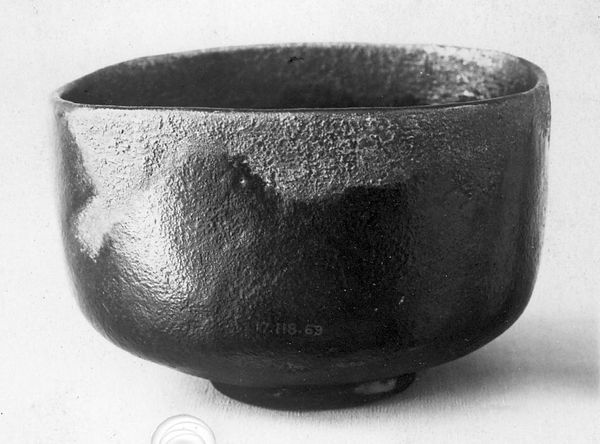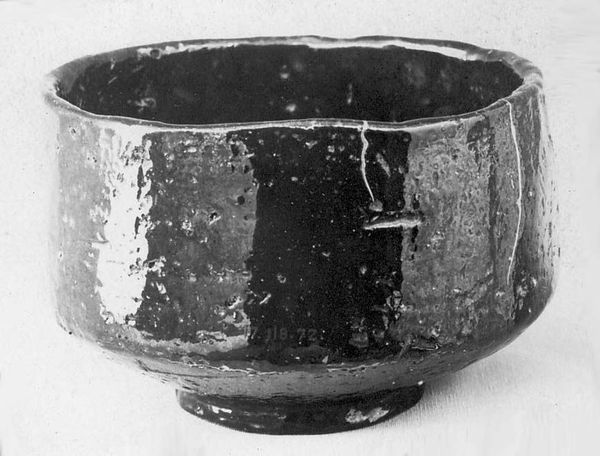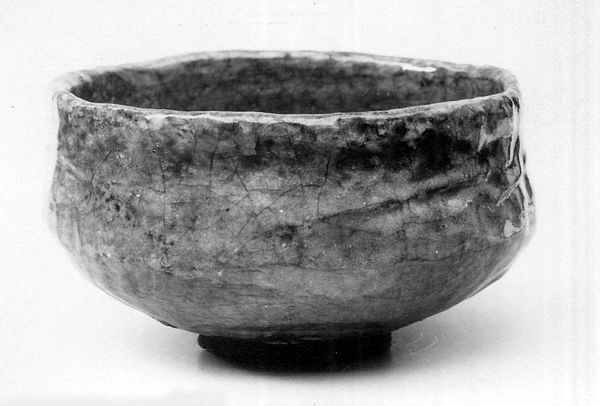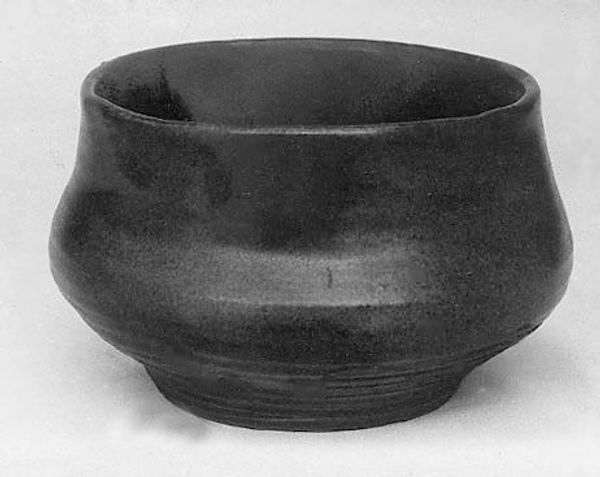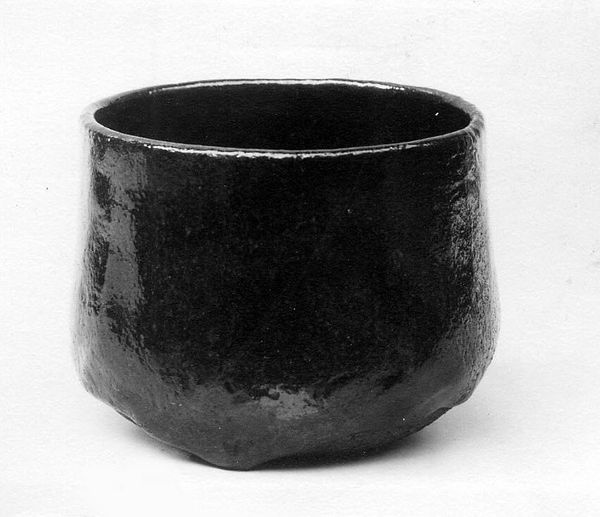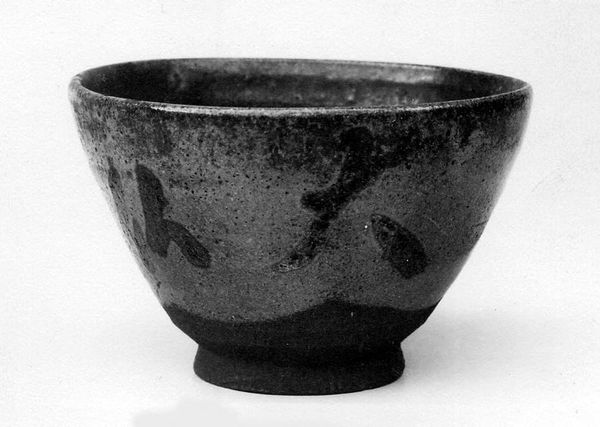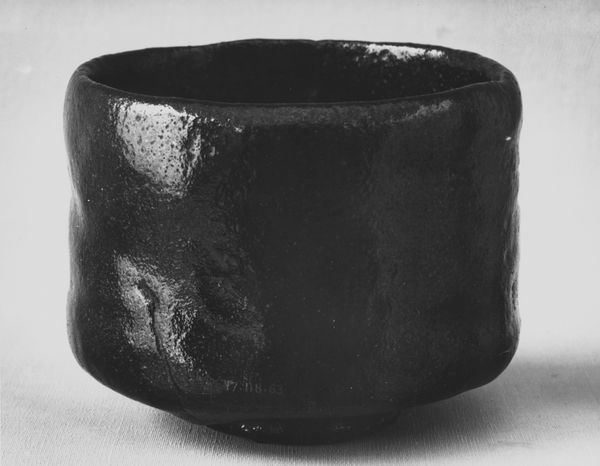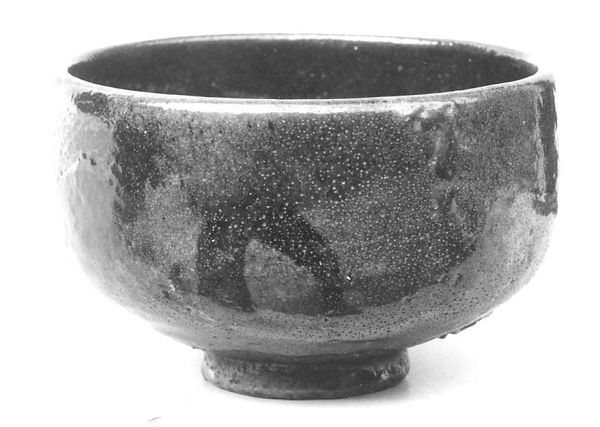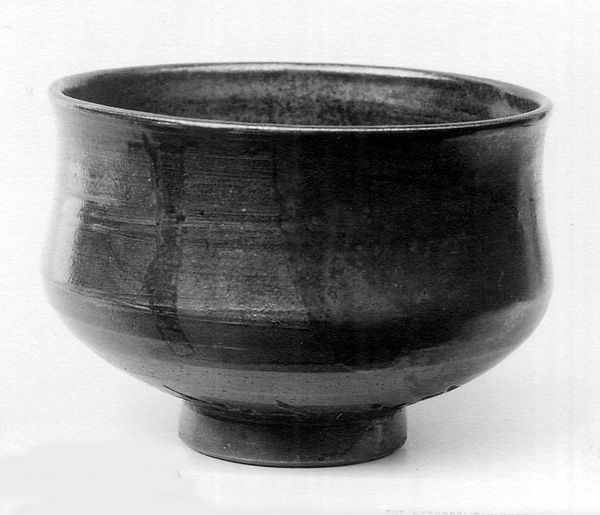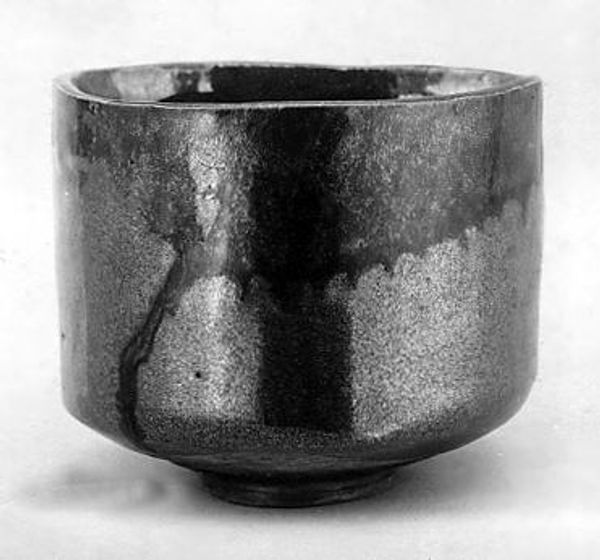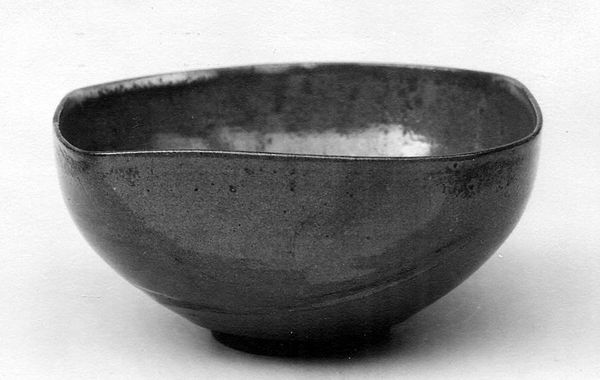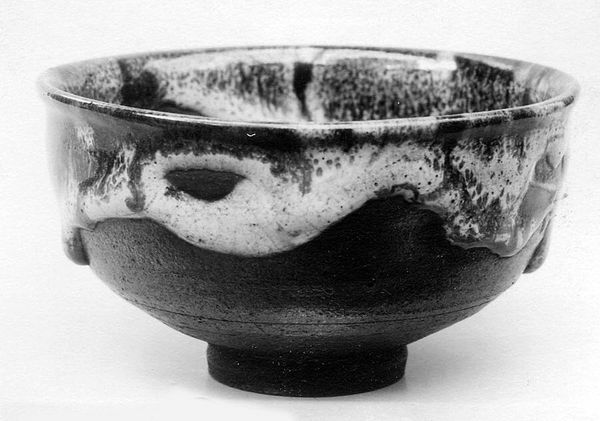
ceramic, earthenware
#
asian-art
#
ceramic
#
earthenware
Dimensions: Diam. 4 3/8 in. (11.1 cm)
Copyright: Public Domain
Curator: Immediately striking is this almost unsettling imperfection—it exudes such earthy weight, even in a photograph. Editor: Indeed. Here we have a Japanese teabowl crafted sometime between 1760 and 1780, attributed to Tokunyu. The teabowl, part of the Metropolitan Museum's collection, is made of earthenware and ceramic. Curator: The lack of symmetry is quite intriguing. It feels deliberately…rough. Like it was molded quickly, maybe even with bare hands. The glaze has bubbled and collected, creating such deep variation in tone across its surface. Editor: Well, you're not far off. These wares were functional objects but deeply ingrained within ritual, status and social gatherings. Tea culture, especially from this time, involved very codified, choreographed customs involving highly aestheticized—but also extremely personal—objects like this bowl. Think about the role of the tea master, his aesthetic judgment. Curator: Right, the social aspect. And given the intentionality apparent here, it wasn’t merely about casual drinking. The scale appears intimate, suggesting personal, even solitary reflection. Was this used for specific types of teas? The dark glaze feels so grounding. Editor: Perhaps more than specific teas, the bowls themselves accrued meaning based on their role within particular ceremonies and were deeply associated with certain aesthetics like wabi-sabi. That is, appreciating imperfection and transience as a virtue. Curator: So, almost a form of material philosophy! It's more than just a vessel, then. It embodies a set of ideals, almost political even. What a quiet subversion against…well, everything mass-produced today. It invites slowing down, noticing, and accepting flaws. Editor: Yes, this object whispers volumes about the aesthetics of the period and the social contexts that gave it meaning. What begins as a tactile analysis expands into cultural insights, illustrating that a simple form can convey significant stories about people, practices, and perceptions.
Comments
No comments
Be the first to comment and join the conversation on the ultimate creative platform.
